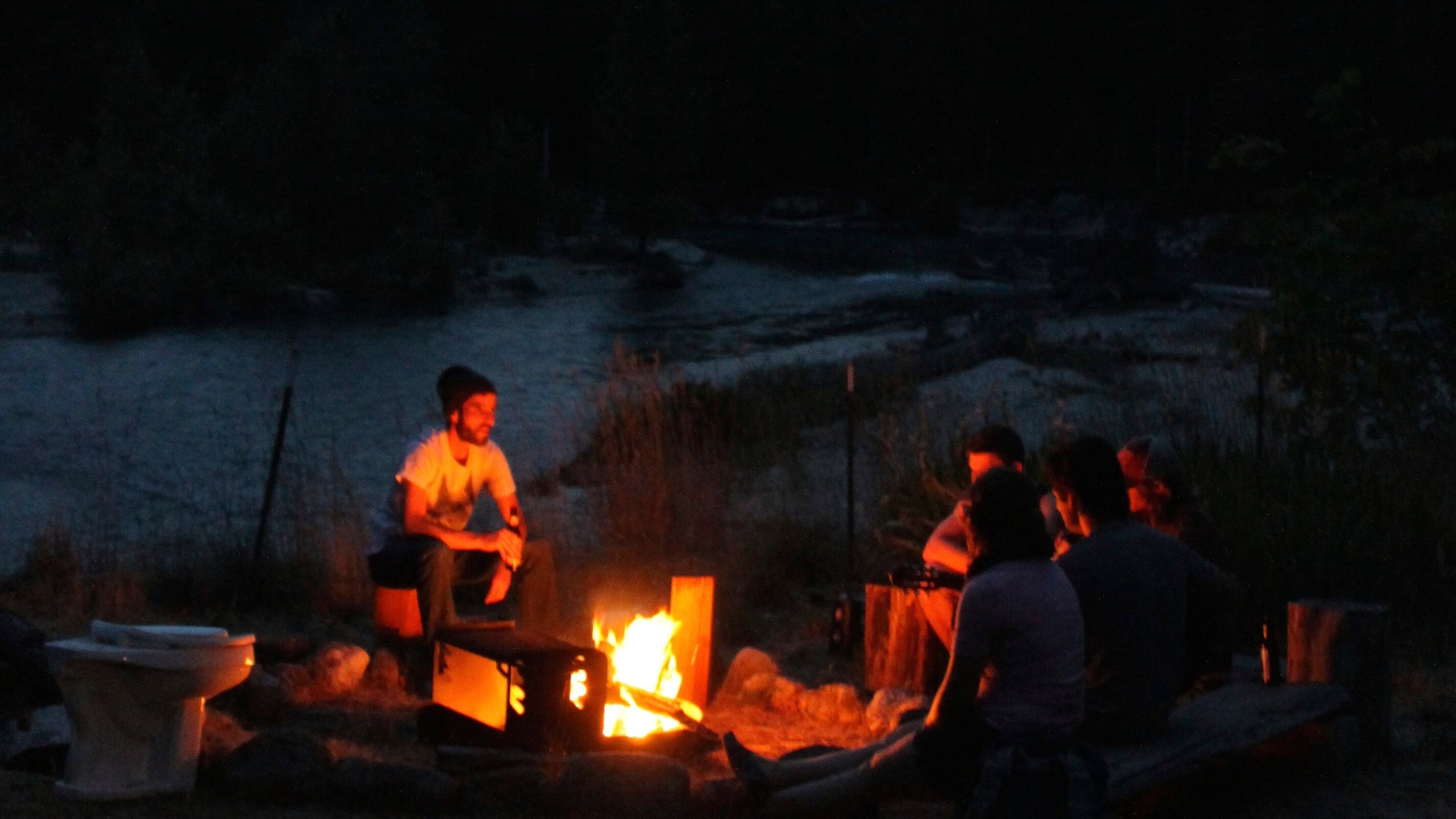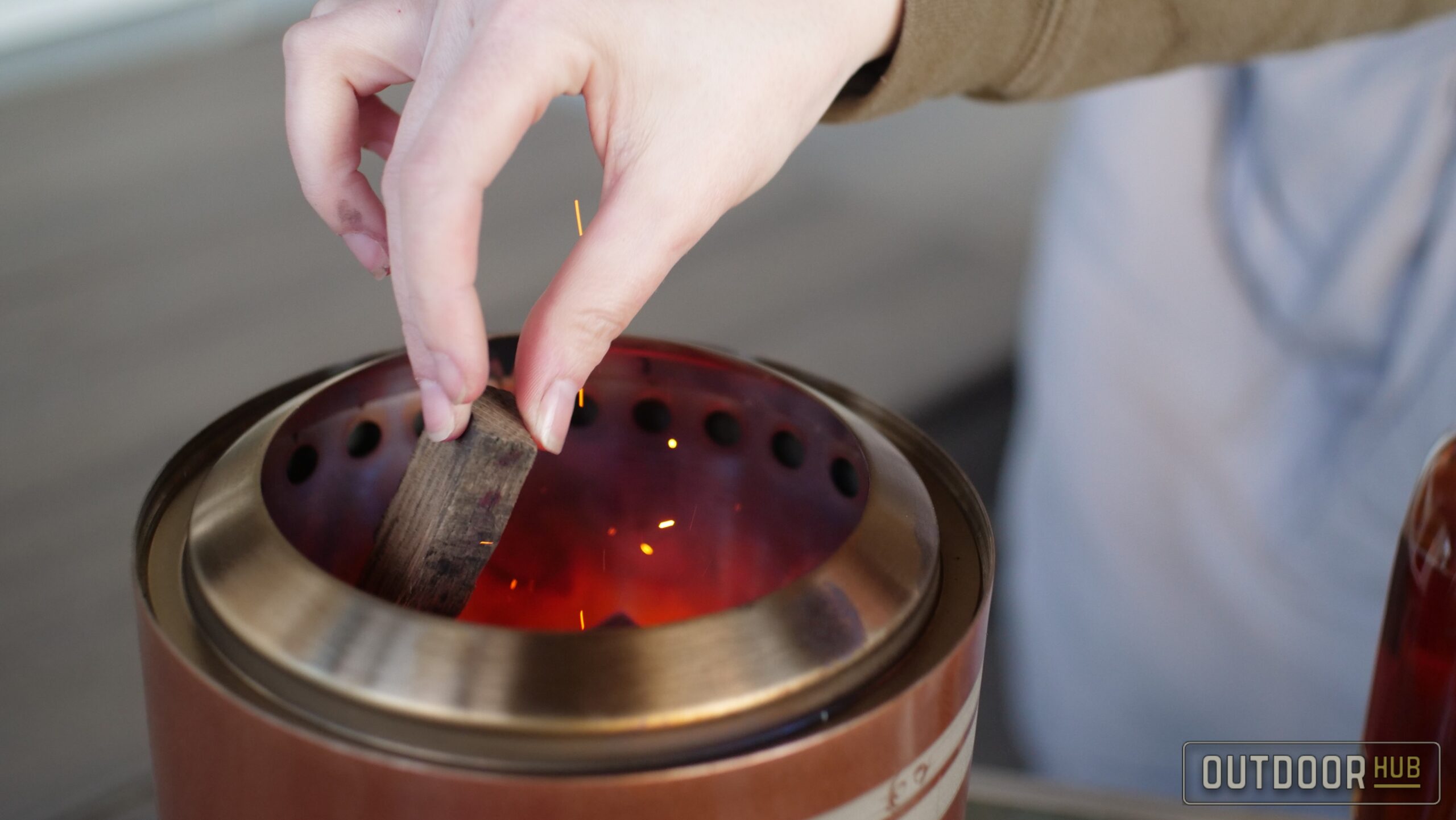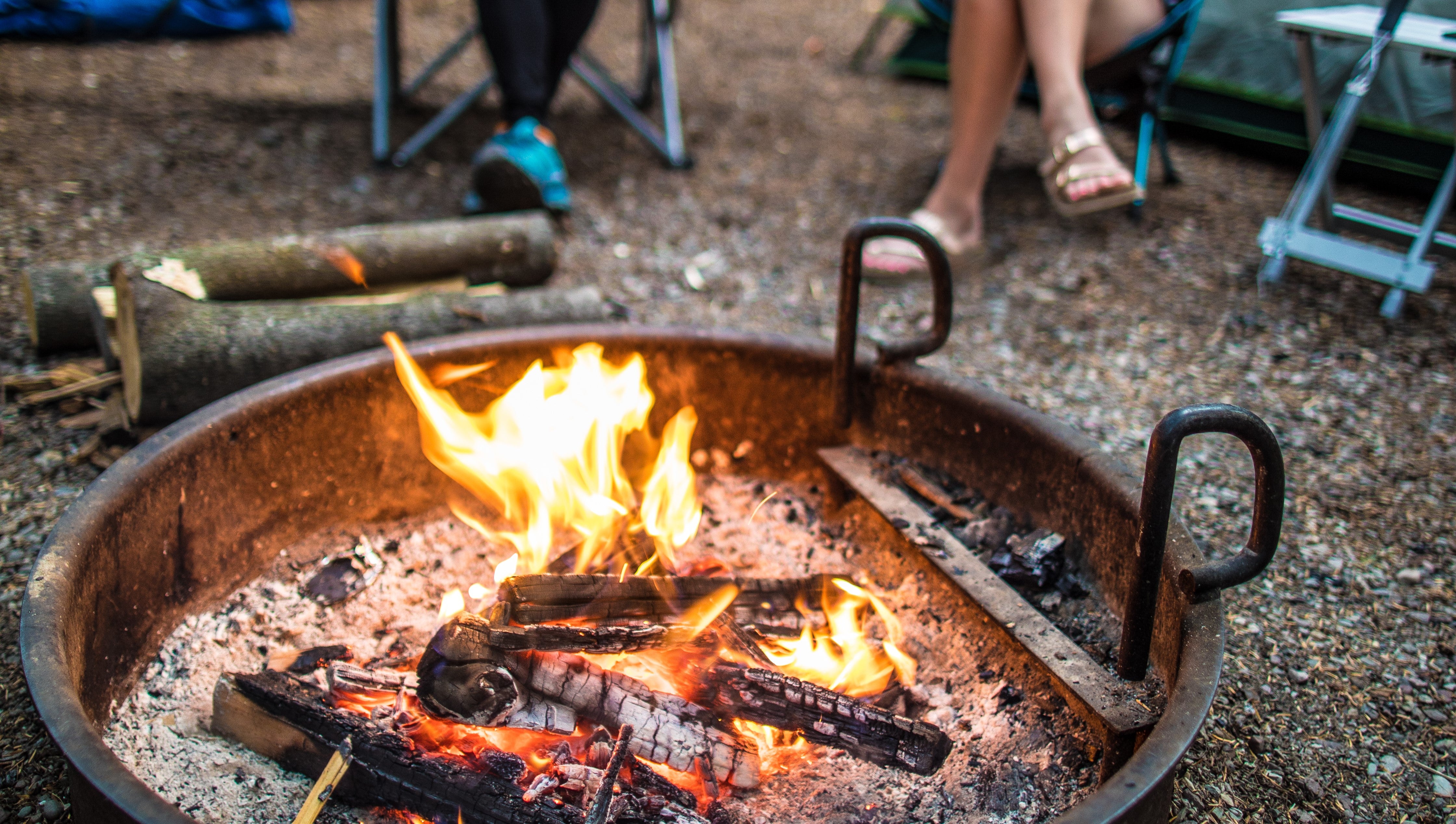Nothing beats the glow of a campfire under a starry sky, whether you’re roasting marshmallows in the Smoky Mountains, sharing tales in the Sierra Nevada, or warming up by a lake in Ontario. For campers and hikers across North America, campfires are a cherished tradition—but they come with serious responsibilities. Oregon’s 2020 Labor Day fires, partly fueled by human-caused ignitions like unattended campfires, scorched over 1 million acres, destroyed 5,000 homes, and claimed 11 lives, showing what happens when campfire safety is ignored. At AllOutdoor.com, I think it’s safe to say that we all love a good roaring campfire or bonfire when appropriate. But we’re also here to help you enjoy campfires safely, from coast to coast. Today I’ll be providing you guys with a few of my best Campfire Safety Tips that I’ve gleaned with expert advice from the Oregon Department of Forestry, Keep Oregon Green, Oregon State Parks, and time-tested fire safety principles, these campfire safety tips will keep your fires under control and our wild spaces protected. Let’s get Started!
Camping Coverage on AllOutdoor
- Go Beyond Trail Mix with 6 Clever Ways to Enhance your Camping Meals
- What Equipment Do You Need for a Maximalist Camping Trip?
- Shake Up your Summer Camping Trip with these 6 Additions

Campfire Safety Tips to Help YOU Prevent Wildfires While Camping
A Quick Word on Forest Fires
It’s often a boring topic but after seeing my home state of Oregon get torched a number of times – especially in areas where I frequently camp and adventure – I’ve gotten acutely more conscious about my personal campfire safety habits. Wildfires are a growing threat across not just Oregon, but most of North America, with humans causing up to 87% of them, per the Bureau of Land Management. Oregon’s 2020 fire season is a sobering example: the Archie Creek Fire alone burned 131,542 acres and cost $70 million to fight, worsened by dry conditions that turned small sparks into infernos. Mismanaged campfires can ignite pine needles or grass, spreading rapidly in windy conditions. By mastering safe campfire practices, you’re not just protecting your campsite and all of your expensive gear—you’re helping prevent disasters like those that devastated Oregon’s forests and communities.

1. Know Before You Go: Check Local Fire Regulations
Before you pack your tent, check the fire restrictions for your destination. Regulations vary by region and season, and in Oregon, the Department of Forestry’s fire restrictions map (www.oregon.gov/odf) tracks public use restrictions, often banning campfires during high fire danger, as seen in the 2024 Tillamook State Forest’s extreme risk periods. In addition to online sources for up-to-date fire information, most campsite or even state forest sites will have physical signs that indicate the level of fire danger that day giving you a good guide for whether or not it’s even a good idea to start any type of open flame fire.

- Actionable Tip: Visit the managing agency’s website, like the U.S. Forest Service or state park services, or call local ranger stations. In Oregon, www.keeporegongreen.org offers real-time fire restriction updates—I also use similar tools like InciWeb or local fire district sites elsewhere in North America. Search X with hashtags like #WildfirePrevention for additional sources of information – most state parks and camping areas will likely have social media accounts giving you virtually real-time information. Knowing how to prevent wildfires while camping starts with staying informed.
- Why It Matters: Ignoring bans, as some did in Oregon’s 2020 fire season, risks fines and fuels wildfires. The Santiam Fire, which burned 402,274 acres, shows how a single spark in dry conditions can ignite a catastrophe.

2. Choose the Right Location
Where you build your campfire matters both for the efficiency of the burn as well as safety. Oregon State Parks requires using existing fire rings in campgrounds like Cape Lookout to contain fires, a practice that applies across North America’s diverse landscapes. If you’re camping in an area where displaced camping is allowed (most of what I do) it helps to thoroughly prepare a fire pit area that is flat, a safe distance away from flammable camping gear or nearby dry foliage or deadfall – embers from an open fire can easily ignite dry grass in the summer months and quickly start a fire that you won’t be able to control at a displaced campsite without more robust fire extinguishing equipment.

- Actionable Tip: Stick to designated fire pits when available. If you’re in a remote area, pick a flat, open spot at least 15 feet from tents, trees, or flammable materials like dry grass or pine needles. Clear a 10-foot radius to bare soil and surround the pit with rocks. Avoid steep slopes—fires climb hills fast, as Oregon’s 2020 Riverside Fire (138,054 acres) proved.
- Why It Matters: A poorly chosen site can ignite nearby vegetation, a lesson from Oregon’s 2018 Klondike Fire, which burned 175,258 acres. Safe campfire locations are key to wildfire prevention camping. Source: https://smokeybear.com
3. Gather the Right Materials
The Oregon Department of Forestry is extremely strict, especially in public campgrounds, that the right fuel is used when burning campfires. This practice keeps fires manageable and protects ecosystems. Oregon’s Keep Oregon Green campaign emphasizes local firewood to avoid spreading pests like the emerald ash borer, a tip relevant everywhere as these plant-borne diseases can be almost as destructive as wildfires themselves. In addition, burning improper materials or garbage and other woods like pallet wood can be harmful to your health due to the chemicals used to treat the wood or used when gluing together wooden furniture, etc.

- Actionable Tip: Collect tinder (dry leaves, small twigs), kindling (sticks under 1 inch), and fuel (larger logs) from the ground. Buy local or certified heat-treated firewood within 10 miles of your campsite, as Oregon State Parks recommends. Most public campsites will have wood at the local Ranger Station located on site, and displaced camping locations will of lots of deadfall nearby for burning almost year round. Never use gasoline or lighter fluid, which can spark uncontrollable flare-ups – unfortunately, the source for this tip is some personal experience at home with an ill-fated quick-start barbecue attempt.
- Why It Matters: Non-local wood spreads invasive species, and flammable liquids risk explosions or unintended ignition of nearby flammable materials. Any fire, including those recently seen in Southern California, showed how quickly dry fuels and building materials ignite (even if intentional), making safe campfire materials critical.

4. Build a Small, Contained Fire
Oregon State Parks advises keeping campfire flames at knee height (about 2 feet) to reduce ember spread, a smart rule for any North American campsite or even backyard fire pits. Bonfires are obviously much larger and out of the scope of this article but it goes without saying that larger fires obviously expose you and your surroundings to greater risk of unintentional ignition. It’s best to gradually grow your fire or place a hard limit on its size or the amount of fuel you can add – Solo Stove stainless steel portable fire pits are great for this purpose.

- Actionable Tip: Start with a tinder, layer kindling in a teepee or log cabin shape, and add fuel logs gradually. Keep fires under 3 feet high and 4 feet wide. Burn only wood—never plastics or trash, which release toxic smoke. Toss used matches into the fire to avoid stray sparks. Don’t use flammable liquids to start campfires. On windy days consider an even smaller fire, or subterranean fire option like a Dakota Fire Hole.
- Why It Matters: Small fires are easier to manage, cutting ember risks. Oregon’s 2020 Beachie Creek Fire (193,573 acres) was worsened by wind-driven embers, highlighting why contained campfires are essential for safe camping.

5. Never Leave a Campfire Unattended
Oregon law mandates constant campfire supervision, as unattended fires are a leading wildfire cause, per Keep Oregon Green. Beyond that, it’s never a good idea to leave any sort of fire unattended – even for short periods of time. Sheriffs, park rangers, and other law enforcement officials with the authority can and will write you tickets for unattended or unauthorized fires.

- Actionable Tip: Assign an adult to watch the fire at all times. Keep kids and pets at a safe distance. Have a shovel, bucket of water, or fire extinguisher nearby. Extinguish the fire completely before stepping away, even briefly—Oregon has $110 fines for violations if you’re okay with paying an indulgence for your lack of caution.
- Why It Matters: A moment’s inattention can spark disaster. Oregon’s 2017 Eagle Creek Fire, ignited by the use of out-of-season fireworks but was worsened by dry conditions, burned 48,831 acres, showing how fast fires escape even if the ignition source isn’t all that hot or only comes from a small ignition source.

6. Extinguish Fires Properly
The “drown, stir, feel” method, backed by Keep Oregon Green, ensures fires are fully extinguished, preventing smoldering embers from reigniting. You should include the estimated burn time for your added fuel when you’re making fires too and try to make sure your fire is burnt as far down as possible before attempting to extinguish it. Smaller particles will be easier to extinguish completely and will hold less heat when being extinguished. When extinguishing fires in the wild natural methods such as water, dirt, or sand are used in lieu of other liquids, damp bark, and even fire extinguishers as they can unnecessarily damage the environment and typically cause a bigger mess – if your fire is out of control, however, don’t be afraid to use a fire extinguisher if you have it available.
- Actionable Tip: Burn the fire to ashes, drown with water, stir embers, and drown again. Check with the back of your hand—if it’s too hot to touch, it’s not out. Scatter ashes away from camp, following Leave No Trace principles to leave no trace.
- Why It Matters: Incomplete extinguishing sparked fires like Oregon’s 2018 Substation Fire (52,599 acres). An improperly extinguished fire will eventually lead to an unattended fire which could either land you a fine or inadvertently lead to other things catching fire and eventually a forest fire.

Campfire Safety Tips to Help YOU Prevent Wildfires While Camping
7. Be Prepared for Emergencies
Oregon’s rugged terrains, like the Deschutes National Forest, highlight the need for emergency preparedness which should include fire preparedness. You should have a plan in place should some of your things catch fire, or if the fire appears to be spreading out of control. If you are in the range of emergency fire services they should be called immediately, if you’re in a more remote location, a satellite phone and or a GPS-enabled emergency messenger beacon can give first responders the vital advance warning they need to hopefully contain the fire in its infancy, as well as get you and your party rescued. In addition to that, you should have some emergency medical supplies, as well as a fire extinguisher handy in your vehicle at a bare minimum.

- Actionable Tip: Carry a satellite messenger or personal locator beacon (PLB) in areas without cell service. Know your GPS coordinates to report fires to 911. Keep a first aid kit and learn fire-related injury treatments. Check Travel Oregon’s wildfire map (traveloregon.com) or similar regional tools for active fire zones.
- Why It Matters: Quick action limits fire spread, as seen in Oregon’s 2020 Holiday Farm Fire (173,393 acres). Preparedness saves lives and resources, making it an often unseen but extremely important factor of safer campfires in North America.

Parting Thoughts
If you’ve taken the time to click on each of the wildfire links I’ve provided you’ll see that an errant fire is no joke. Whether you’re camping in Oregon’s Cascades or Canada’s Rockies, campfire safety is a shared duty. Oregon’s 2020 wildfires, which left scars still visible today, remind us of the stakes: a single spark can destroy forests, homes, and lives. By checking regulations, choosing safe sites, and extinguishing fires thoroughly, you can enjoy the warmth of a campfire without risking devastation. Let’s keep North America’s wild spaces thriving for generations. What’s your go-to campfire safety tip? Share it in the comments or on X, tagging AllOutdoor.com, and let’s keep our fires where they belong: in the fire ring.
The post Campfire Safety Tips to Help YOU Prevent Wildfires While Camping appeared first on AllOutdoor.com.


